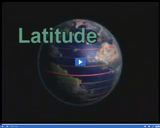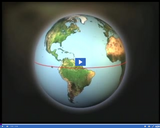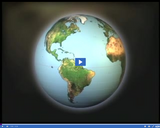
Areas near the equator receive the sun's rays more directly throughout the year, resulting in an overall warmer climate.
- Subject:
- Science
- Provider:
- Utah Education Network
- Author:
- Visual Learning Company
- Date Added:
- 02/28/2010

Areas near the equator receive the sun's rays more directly throughout the year, resulting in an overall warmer climate.

Latitude is the measure of distance north or south of the equator. The equator has a latitude of 0 degrees, and the north and south poles have latitudes of 90 degrees.

Areas near the north pole receive the sun's rays indirectly, causing them to be cooler than areas near the equator.

With this activity, students use a globe to learn how a position on Earth can be described. They investigate how latitude can be found using the stars. Students learn what latitude and longitude are and how to use them to indicate a position on Earth. They investigate how in some locations on Earth, the direction of the midday sun can change over the year.

Lines of latitude run parallel to the equator, which is at zero degrees latitude. The north pole is 90 degrees north latitude and the south pole is 90 degrees south latitude.

The grid pattern formed by intersecting lines of latitude and longitude enable exact locations on Earth's surface to be pinpointed.

This lesson unit provides an insight into the navigational methods of the Bronze Age Mediterranean peoples. The students explore the link between history and astronomical knowledge. Besides an overview of ancient seafaring in the Mediterranean, the students use activities to explore early navigational skills using the stars and constellations and their apparent nightly movement across the sky. In the course of the activities, they become familiar with the stellar constellations and how they are distributed across the northern and southern sky.
Students will learn about latitude, longitude, and how to read a grid.